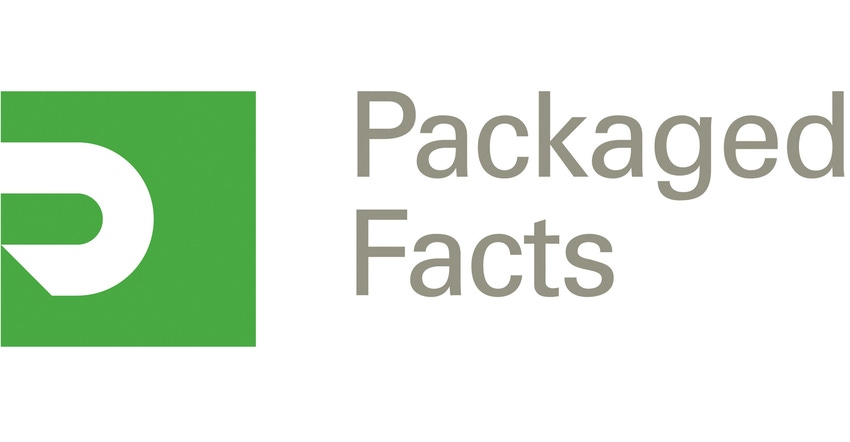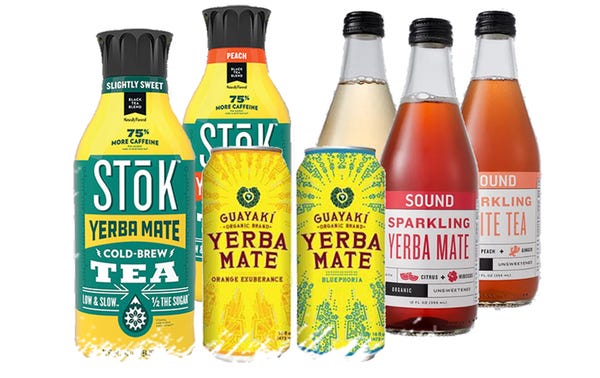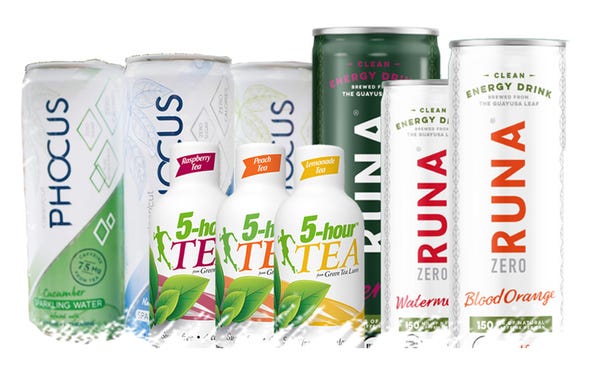Packaged Facts predicts mashup beverage trends in the US
Coffee, tea and energy drinks are finding increased sales through unexpected crossover formulations.
March 15, 2019

Your daily cup of coffee just got much more interesting. In fact, the U.S. beverage market overall is benefiting from new innovations and formulations in recent years.
Such efforts by marketers and manufacturers have given the otherwise-mature beverage industry the buoyancy necessary to stay afloat and thrive, according to U.S. Beverage Market Outlook 2019, a new report by market research firm Packaged Facts.
One of the most important recent innovations identified involves mashups—the crossover fusion of two or more beverage products that traditionally wouldn’t be expected to go together. Packaged Facts sees three key mashup trends spurring growth in the beverage industry: coffee, tea and energy drinks.

Coffee jolts soda, energy drinks, juice and bottled water
More frequently, coffee is being integrated into sparkling beverages, energy drinks and juices. This trend should expand as consumers seek the indulgence and flavor of coffee yet thirst for the effervescence of a carbonated beverage, the additional boost of energy ingredients and more taste options.
“The carbonated soft drink or soda category is challenged, but many consumers moving away from soda still want flavored drinks that have bubbles,” said David Sprinkle, research director for Packaged Facts. “They also want healthier, more natural versions with less or no sugar. One of these soda alternatives is ready-to-drink coffee, which has seen a spate of sparkling versions on store shelves.
“Even more interesting is when we see coffee and sodas converge into an amalgamation that satisfies multiple tastes with a single beverage,” he continued.
For example, Matchless Coffee Soda is made from locally roasted coffee brewed hot and flash-chilled. The drink is sweetened with Demerara sugar and carbonated. Similarly, Brooklyn, New York-based startup Keepers produces sparkling coffee in two versions—citrus and black. The company roasts organic beans using a Japanese flash cold-brewing method and blends the coffee with fresh-pressed Florida tangerine juice to make the citrus version. Also in the conversation is Upruit, which offers a blend of cold-pressed fruit juice and cold-brew coffee with light carbonation.
And because convenience stores and coffee are nearly inseparable, convenience store chain 7-Eleven adds a twist to coffee soda with innovative packaging for its private label Fizzics Sparkling Cold Brew Coffee. The product is packaged in self-chilling cans that cool the coffee when the user turns the can upside down and twists the base until a hissing sound is heard. The product is cold in 75 to 90 seconds. The cans are also recyclable, which is advantageous with more consumers increasingly worrying about beverage packaging and waste.
Beyond soda and juice, coffee is also being paired with bottled water. Happy Tree combines cold-brew coffee with its maple water, The product’s marketing focuses on its naturally occurring nutrients not found in traditional water and that the beverage is sweet yet low in calories.

Tea brews up healthier flavor fusions that appeal to millennials
On a similar development trajectory to coffee, tea is increasingly being incorporated into sparkling beverages, energy drinks and juices. The results impart tea’s health benefits into beverages whose energy ingredients, carbonation and flavors often have a wider appeal to younger adults.
As a soda alternative, new products to market include sparking versions of ready-to-drink (RTD) tea. An interesting sparkling iced tea brand is Sound Sparkling Tea, available in chamomile, green tea, rose tea, yerba mate and white tea flavors.
Tea merges into the energy drink space not only with stimulants like guayusa, green tea and matcha, but also yerba mate, which is starting to catch on with young millennial consumers who are more adventurous with their food and beverages. The Guayaki organic iced tea brand features yerba mate more prominently than its own name on its bottle’s label.
Similarly, DanoneWave’s STōK brand added a new range of cold brewed teas, STōK Yerba Mate Cold Brew Teas, to complement its cold brewed coffees. The teas contain 75 percent more caffeine than typical RTD iced teas.

Energy and sports drinks created with more ‘natural’ caffeine sources
The lines between sports and energy drinks—and indeed for many beverage categories—are increasingly blurred, as hybrid ready-to-drink energy teas and coffees illustrate. Coffee and tea are naturally energizing. And indeed, most Americans would consider these beverages their original energy drinks. After all, they share the most ubiquitous energy ingredient—caffeine—with today’s most popular energy drinks. Even everyday cola and its caffeine are used by many consumers as energy drinks. More recently, entrepreneurs have launched coffee and tea-based beverages that more clearly emphasize their energy functionality.
Energy drink Runa, backed by actors Channing Tatum, Leonardo DiCaprio and other celebrities, gets what it calls its “clean energy” from the Amazon rainforest guayusa leaf, of which the company has built its own vertical supply chain.
Meanwhile, energy shot segment leader 5-hour Energy turned the tides with 5-hour Tea Shots, launched in 2018. Tea shots, aimed more health-conscious users, gets caffeine from green tea leaves. Otherwise, the drinks contain the same ingredients as regular 5-hour Energy.
Phocus sparkling waters border on being energy drinks with 75 milligrams of natural caffeine from green tea in each can. The waters also contain L-theanine, an amino acid said by the company to provide a “smoother energy lift.” Phocus promotes “clean energy,” which is trending, and sets itself apart from traditional energy drinks by claiming the boost of caffeine “without the crash.”
The U.S. Beverage Market Outlook 2019 presents comprehensive insights on where the market will grow and why. It’s an up-to-date resource on the top seven beverage categories: bottled and enhanced waters, carbonated beverages, coffee and ready-to-drink coffee, dairy beverages and non-dairy milk alternatives, energy and sports drinks, juices, and tea and ready-to-drink tea.
The report focuses on the market for these select beverages sold to consumers in the United States through retail channels. All retail channels of distribution are covered in market sizing and discussion, including supermarkets and grocery stores, mass merchandisers and supercenters, warehouse clubs, natural food stores, convenience stores, drugstores, direct-sales channels including online, and more. Market size data and projections at retail sales are provided for 2013-2018 and 2018-2023, with channel and marketer shares figures for 2018.
View additional information about the report—including purchase options, the abstract, table of contents, and related reports—at Packaged Facts’ website.
Source: Packaged Facts
You May Also Like


